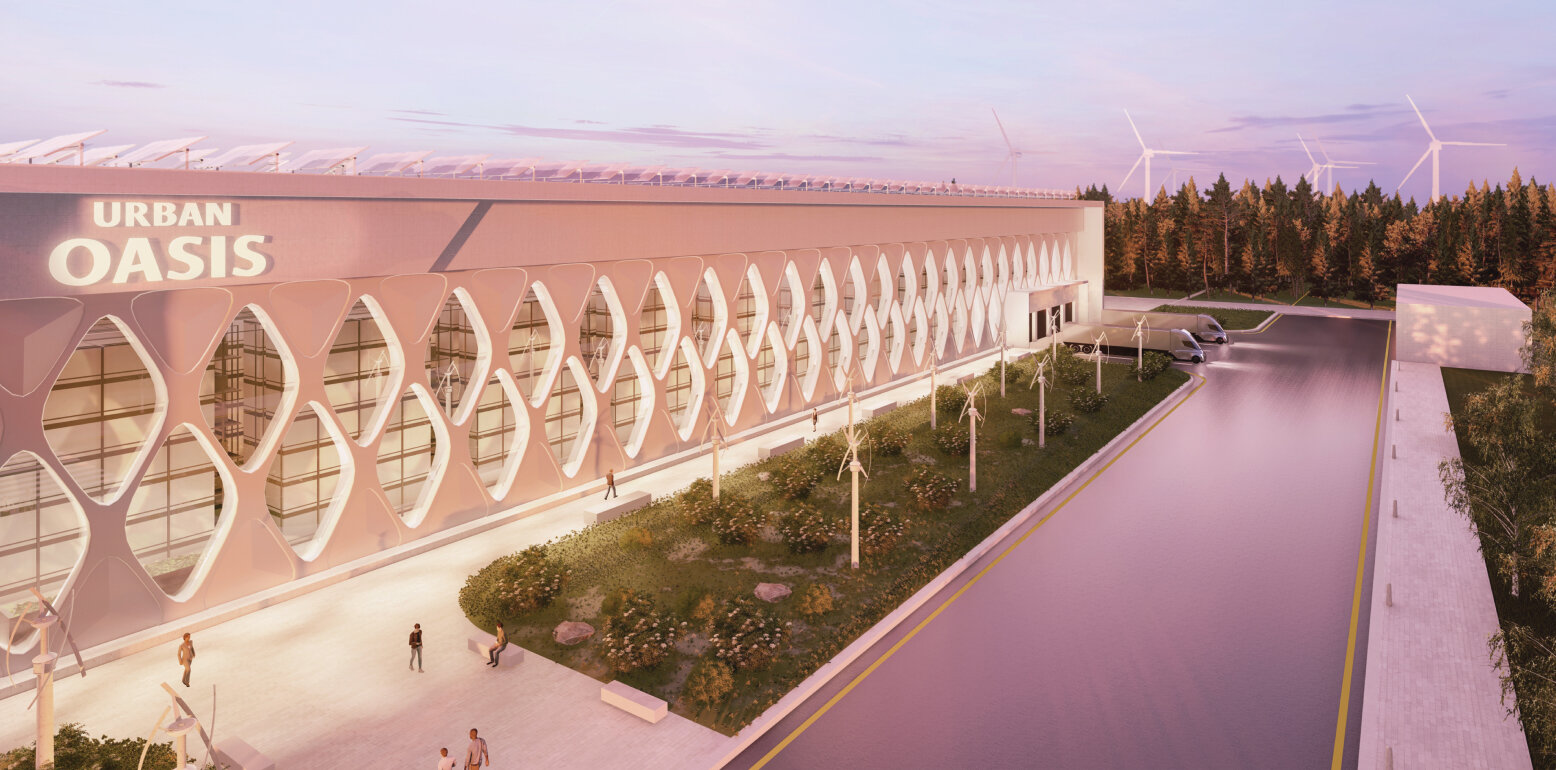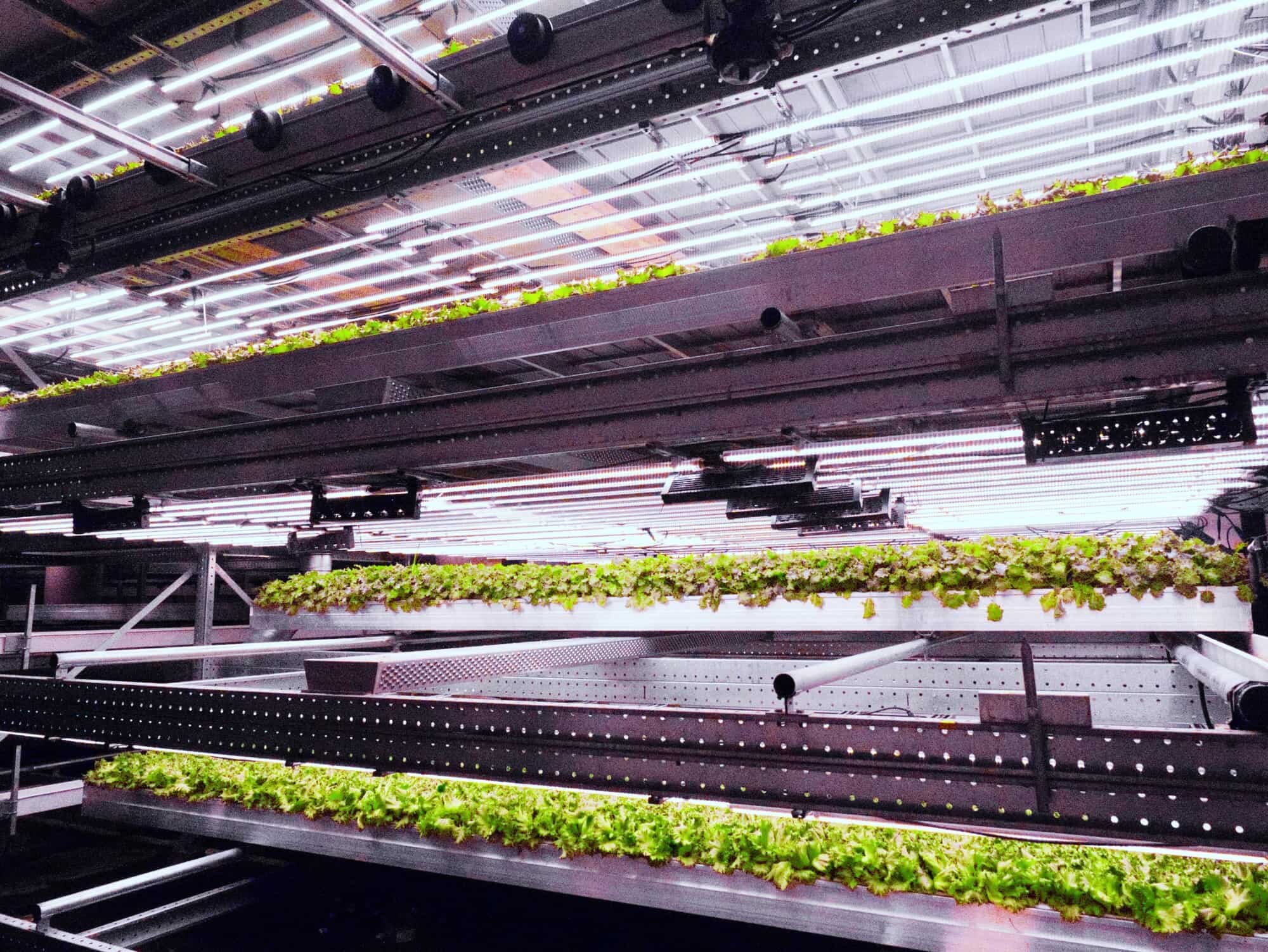Jan 6, 2022
Vertical Farming Underground In Swedish Caves

Image sourced from Urban Oasis
Editor’s note: The following information is derived from an interview Agritecture conducted with Magdelena Juskaite, a Generalist at Urban Oasis. Visit their website or contact Magdelena Juskaite to learn more about or to partner with Urban Oasis.
Inequalities In The Swedish Food System
As the 23rd largest economy in the world, Sweden reports very low rates of poverty and few issues with malnutrition. With a 2019 GDP of US$530.88 billion, residents of this Scandinavian nation have a high standard of living alongside a generous social welfare state.
However, even though food and beverage imports only account for 20% of total food consumed in the country, Sweden imports a substantially higher amount of fresh fruit and vegetables - over 70% according to FAO.
Magdelena Juskaite, a Generalist at Urban Oasis, adds that “Sweden actually imports large quantities of greens and vegetables for the population to consume. Importing these greens leads to long transport times which leads to the vegetables and greens not staying as fresh. Unfortunately, this also leads to food waste and untasty produce.”
To combat these high import rates, since the beginning of the 1990s, the Swedish Government has actively supported organic farming. However, with this steady growth of organic land areas, the overall organic market share still remains low, about one percent of the total food consumption.
These concerns are further aggravated by the inequalities present in those who experience hunger in Sweden. According to Smart City Sweden, this depends on the resident’s social and economic positions. Their studies have found that hunger is definitely more likely to impact people living in poverty.

Image sourced from Urban Oasis
Starting A Food Revolution In Sweden
Juskaite shares that “tasty greens that are pesticide-free are usually only available to the wealthier part of the population.” As Sweden’s first commercial vertical farm, Urban Oasis has a strong desire to transform Sweden’s food system by both reducing fresh food imports and tackling these diet-related inequalities.
The Urban Oasis team believes “that vertical farming & controlled environment agriculture will be a major contributor to the nutritional intake of the population. We can grow vegetables, mushrooms, algae… As soon as price parity is achieved, CEA-grown and vertically farmed products will become the main choice of consumers, similarly to plant-based meat, lab-grown meat, and all the other food tech trends.”
By growing vertically in what they call their “underground oasis in Stockholm,” the team’s vision is clear - “to bring healthy, affordable and sustainable food to the many people.”
The Underground Oasis Making Use Of Unused Spaces

Image sourced from Urban Oasis
By vertically farming indoors, the Urban Oasis team is able to ensure that they use the height of the space in order to get the biggest harvests.
They share that “in this way, we get lots of food even in smaller spaces. That is why vertical farming is a good alternative for unused spaces in urban areas - exactly like our underground farm deep down in the caves of Liljeholmen, in central Stockholm.”
As they grow below ground to make the best use of space, they must supplement specific natural elements. For instance, “we replace the sun (and the absence of sun) with LED lights. We also don't use any soil. Instead, we use a hydroponic system that saves us 90% in water use compared to outdoor farming.”
With this innovative technique, the team is able to grow “salad, pak choi, and kale.” More recently, the team has “set up a very cool mushroom project where we have pink oysters, king oysters, shiitake, Lion’s mane, and all sorts of cool mushrooms. During the summer, salad was very popular, but now we see that kale is taking the highway.”
Working With Agritecture

Image sourced from Urban Oasis
Because they’re “building all of it from scratch,” Juskaite shares that “the problems range from how to quantify the production to how to change people’s minds about why vertical farming is good.”
Through Agritecture’s blog, Urban Oasis connected with the Agritecture team to help them tackle these concerns. Agritecture proposed a custom design for Urban Oasis’s unique location in a parking garage and assisted with the installation.
On the Urban Oasis team’s relationship with Agritecture, Juskaite shares that it was “great to reduce the activation energy of starting a business in vertical farming. We then could figure out most things through trial and error, but Agritecture was essential to get Urban Oasis started.”
What’s In Store For The Future Of Urban Oasis?
The team initially came together “united by the commitment to find new solutions for a sustainable future.” They share that whilst “right now, we are focusing on leafy greens and software, who knows what we will be offering the world in a couple of years.”
Their plans include expanding to cities beyond Stockholm. “Once we increase production, we will be able to supply all of Sweden. We are also already in discussions with the Nordic countries so hopefully, this will be a part of our audience too.”
Juskaite adds that “we do try to follow what our customers want, so the future of urban oasis is in our customers’ hands! We do have a lot of exciting things happening now, so just keep an eye out on our social media and you’ll see!”

